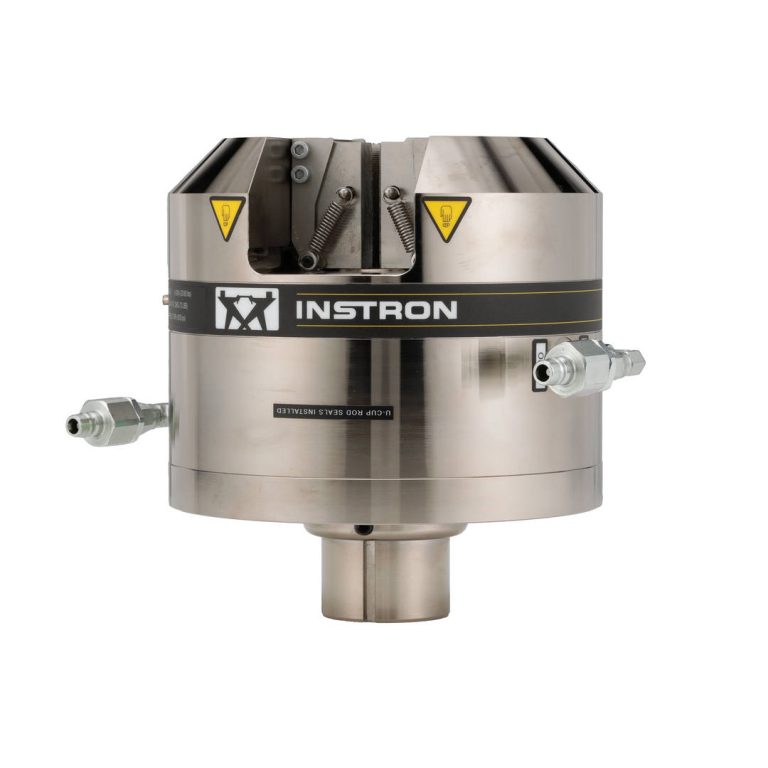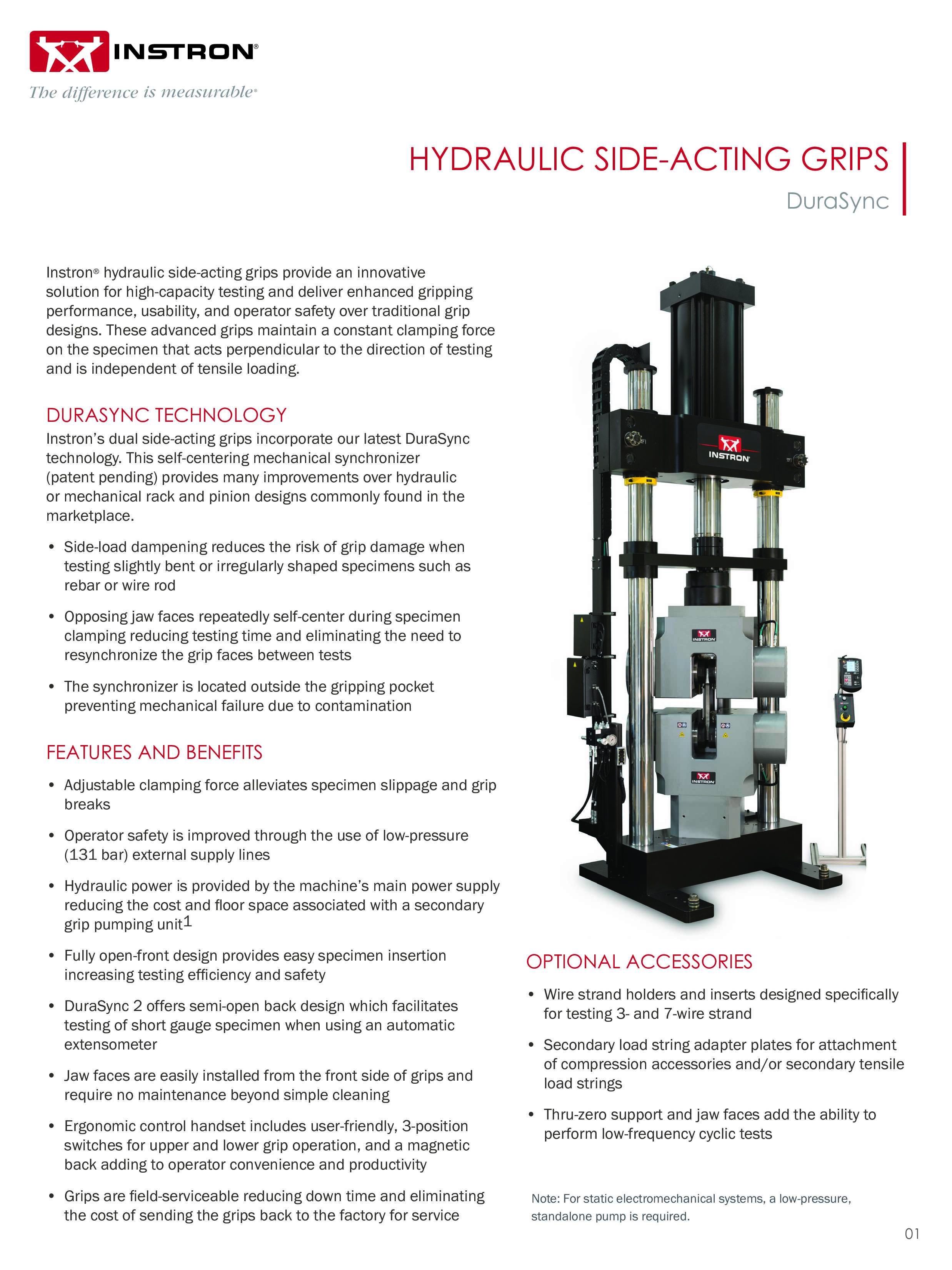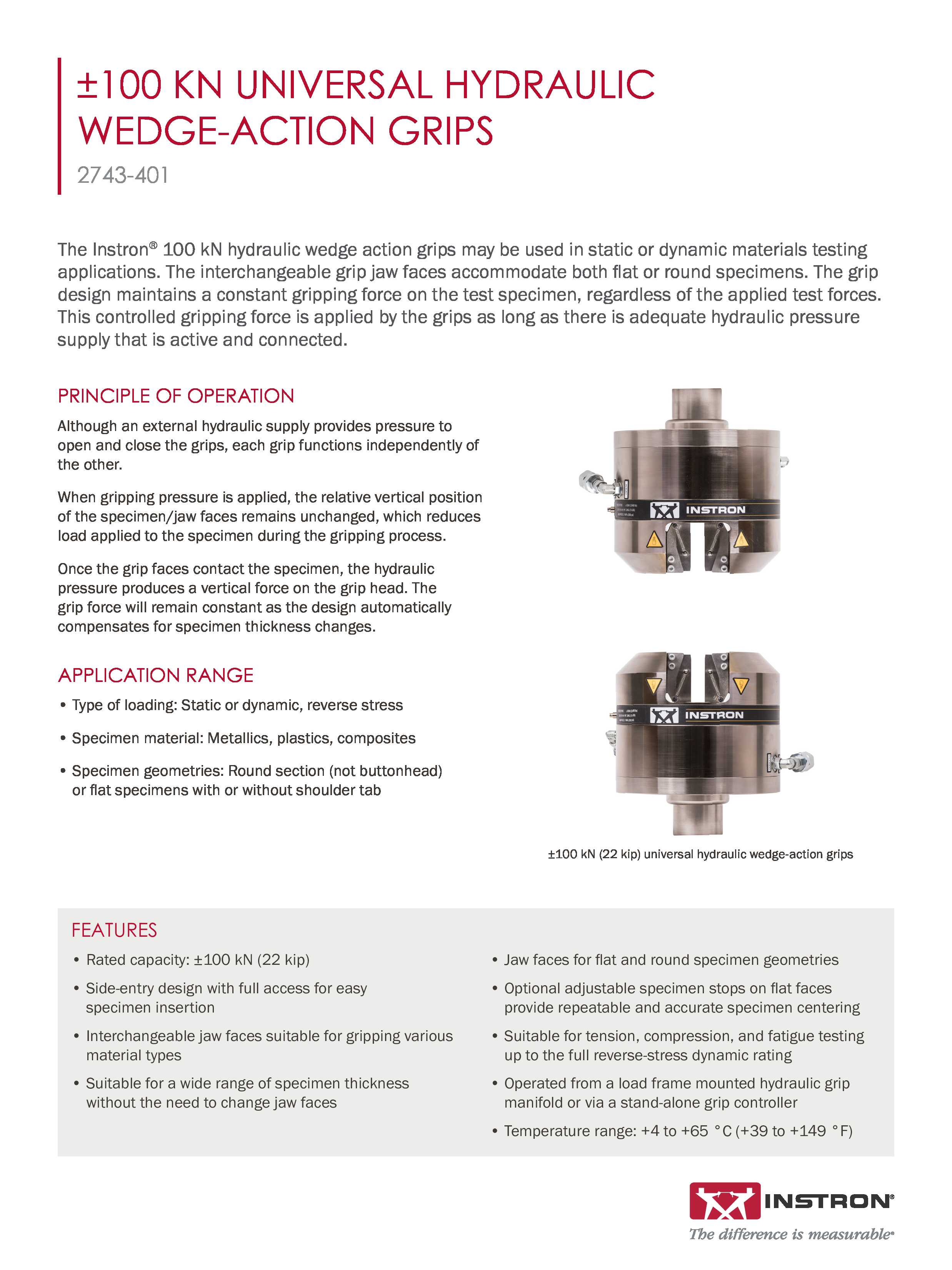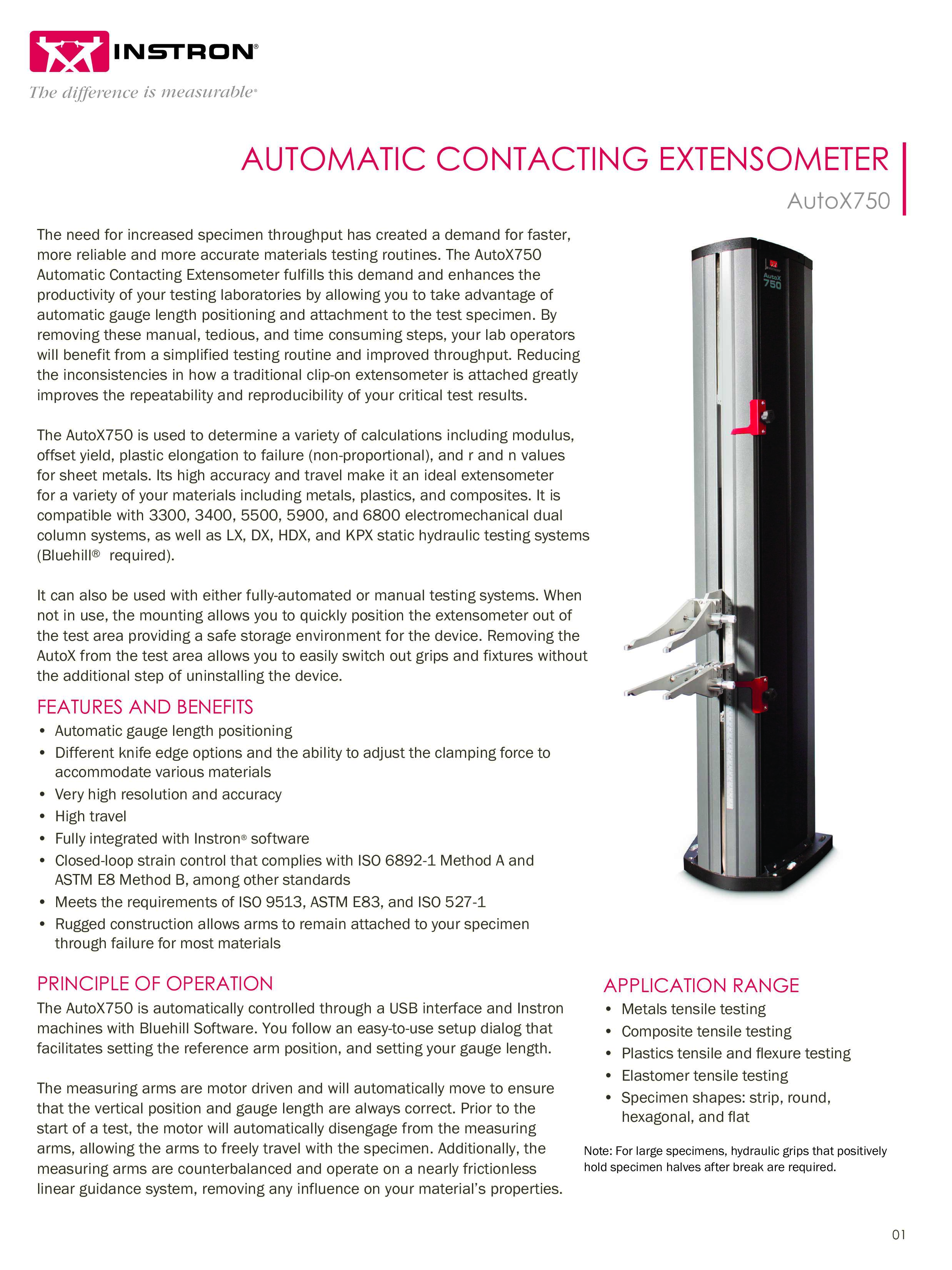ASTM A615 - Standard Specification for Deformed and Plain Carbon-Steel Bars for Concrete Reinforcement
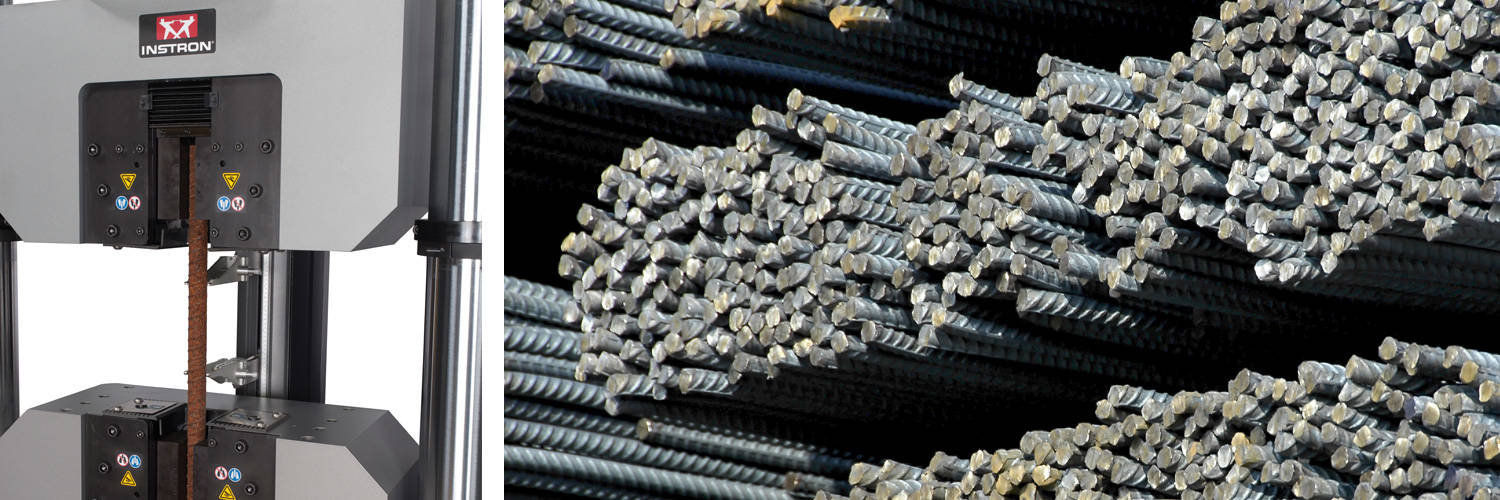
Steel reinforcing bars are designed to absorb the stress and weight of concrete structures such as bridges and buildings. ASTM D615 is a testing standard that provides dimensional, chemical, and physical requirements for plain and deformed carbon steel bars manufactured for concrete reinforcement. Deformed bars include surface protrusions to prevent longitudinal movement after being placed in concrete, while plain bars are smooth sided. These products may be supplied in cut lengths or coils, and are engineered for the express purpose of building and construction.
While ASTM A615 references ASTM A370 and ASTM E290 for tensile and bend testing respectively, this standard includes specific procedures relevant to performing these tests on plain and deformed bar. These tests are performed in order to determine physical properties such as strength, elongation, and satisfactory surface condition after bending. Notably, bars produced in accordance with ASTM A706/A706M are also considered to be in conformance to this standard.
| ASTM A615 Test Setup | |
|---|---|
6800 Series floor model |
|
Bluehill Universal software |
|
2580 Series load cell |
|
Hydraulic wedge grips |
|
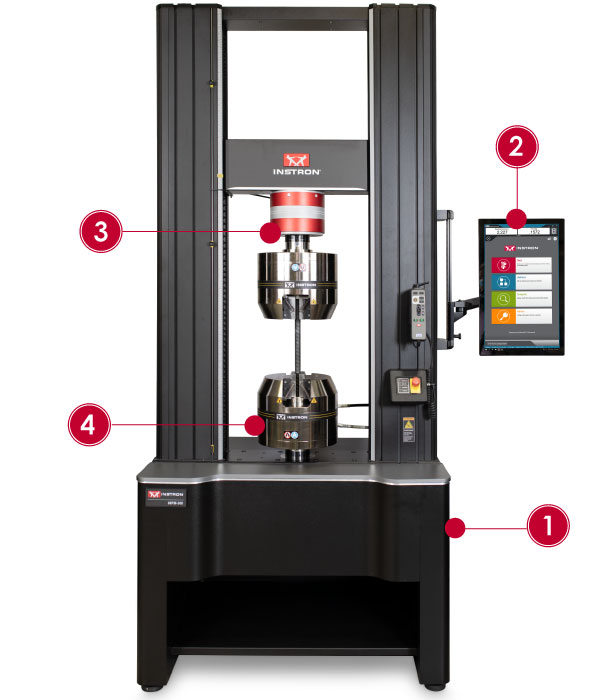
Testing to ASTM A615 typically involves dealing with high shock forces upon specimen failure. This is especially true for higher grades and larger sizes of plain and deformed bar. Because grips are left holding the failed specimens after break, they tend to be impacted the most by this shock. Therefore, it is important to choose robust grips that can effectively absorb the energy, such as hydraulically actuated wedge or side-acting grips. The standard also specifies that specimens from bars should be straightened before testing, especially when obtained from coils. Because it is common for these specimens to retain some bend, we recommend hydraulic, side-acting grips such as Instron's DuraSync grips for this application. These grips clamp from both sides to ensure that even when side loads are present, which occurs when the specimen is bent, they will still clamp on center helping to improve alignment and eliminate the need to “reset” the grips between tests. Because tensile specimens are to be tested using their full cross-section, the surface protrusions of deformed bar can create a challenge for gripping. Rebar-specific jaw faces feature a tooth pattern specially designed to prevent slippage of the specimen, while not being so aggressive as to cause premature failure.
This standard requires the reporting of elongation for each tensile test, and although it is possible to measure this without an extensometer there are many benefits to using one. Instron recommends using an automatic contacting instrument such as the AutoX750 which along with measuring elongation of an 8-inch gauge length, can also calculate offset yield (Rp 0.2). Unlike manual devices, the AutoX750 automatically attaches to and removes itself from the specimen, enabling the operator to stay safely out of the test space and avoid any risks associated with specimen failure. Because the gauge length is set automatically from software inputs and is infinitely adjustable over the entire travel of the instrument, this single extensometer can be used to cover all specimen requirements in addition to those specified in ASTM A615.
TEST CONTROL
Testing ProcedureTesting to ASTM A615 includes 5 basic regions including pretest, preload, elastic region, yielding, and plastic region.
During pretest it is important to ensure that the proper grips are installed and test opening adjustments are made. Prior to installing the specimen, the force (load) measurement should be set zero. Once the specimen is loaded into the system, the force should NOT undergo any further “zeroing” as this will affect the test results. If using a manual extensometer for measuring strain, it should be properly attached to the specimen with the knife edges at the instrument’s gauge length. The strain measurement should then be set to zero prior to loading the specimen.
The preloading stage is used to apply a minimal preload (<5% of expected yield strength) to the specimen in order to properly seat it in the grips and also to aid in pulling the specimen straight prior to testing. A plot of stress or force versus crosshead or actuator displacement will typically show significant displacement for a minimal increase in load due to the grips and load string pulling tight (taking up system compliance). If a preload is not applied and an extensometer is being used, many rebar specimens will show negative strain at the beginning of the test as the specimen straightens. Because of this and/or system compliance, the data during the preloading portion of the test is often ignored or not recorded on the stress-strain graph.
On servo-controlled systems, preloading is usually done slowly using crosshead or actuator displacement feedback for controlling the test speed. Controlling preloading from load, stress, or strain feedback is not recommended as it could lead to undesirable and rapid acceleration until the specimen is pulled tight in the grips.
Depending on the amount of system compliance or slack that was taken up (reduced) during the preload, it may be necessary or desirable to zero the strain measurement at the end of preloading. However, caution must be taken so as to not adversely affect the overall strain measurement. In either case, test results that rely on strain from the extensometer should be adjusted so any non-linear behavior at the very beginning of the test curve does not adversely affect any test results.
Elastic Region
The elastic region or straight line portion of the test as seen on the stress-strain plot can often exhibit some non-linear behavior initially due to further straightening of the rebar specimen. If using an extensometer, this may show up as slightly negative strain at the beginning of the test and is generally considered normal for rebar.
When testing according to ASTM A615, the latest edition of ASTM A370 should be referred to for proper test control and target speeds permitted in the elastic region and until the onset of yielding.
When running the tests on servo-controlled systems, it is important to keep the following scenarios in mind. If using crosshead or actuator displacement control it is generally acceptable to use the same control and speed through both the elastic and yielding portions of the test. However, if stress or strain feedback control is used, the test must switch to crosshead or actuator displacement control just prior to or at the onset of yielding.
Once yielding begins, many rebar grades exhibit a defined yield point that is seen as an abrupt bend in the stress-strain test curve. It is then followed by a period of specimen elongation with little to no increase in force. Because of this, servo-controlled systems must be controlled using crosshead or actuator displacement feedback in order to maintain a constant rate of travel throughout yielding. It is very important to note that using stress control during yielding will cause the test to accelerate excessively, which is in direct violation of the standards. This can also cause the yield point (upper yield) to be masked or smoothed and cause yield strength results to be higher than expected. Likewise, strain control from an extensometer can also become erratic during yielding and is therefore not recommended when testing rebar.
Plastic Region
As permitted by ASTM A370 and thereby ASTM A615, it is acceptable for the test speed to be increased after yielding has completed. For servo-controlled machines, the best way to control the test during this final region is from crosshead or actuator displacement feedback (same as yielding). However, the speed can be increased according to the standard being followed. This allows for the test to complete in a shorter period of time while still producing acceptable and repeatable results.
It is common in ASTM A615 testing to generate scale and dust on the equipment after each break. Instron systems are engineered to operate in this demanding environment; however, it is recommended to brush away scale between tests to maintain good engagement of the specimen between the jaw faces. Neglecting this housekeeping could lead to specimen halves getting stuck in the jaw faces, which may require additional effort to dislodge.
To learn more about ASTM A615, purchase the standard.
